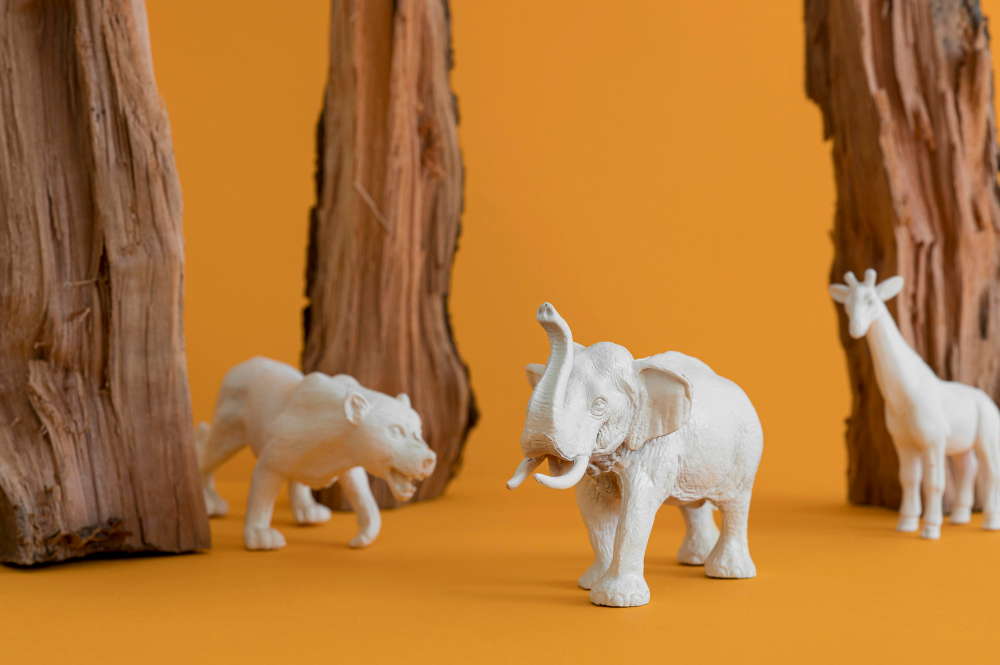Throughout Earth’s history, the fossil record reveals a fascinating phenomenon: animals were often significantly larger in the past than they are today. From towering dinosaurs to massive megafauna, ancient creatures roamed the planet with impressive size and scale. But what factors contributed to this gigantism, and why were animals bigger in the past? Let’s delve into the mysteries of prehistoric giants and uncover the secrets behind their colossal proportions.
Feasting in an Era of Plenty
One prevailing theory suggests that ancient animals were larger due to the abundance of resources available to them. During periods such as the Mesozoic Era and the Pleistocene Epoch, Earth’s ecosystems were rich with lush vegetation, fertile habitats, and abundant prey. This bounty of food provided ample sustenance for herbivores and carnivores alike, allowing them to grow to impressive sizes and sustain large populations.
Thriving in a Tropical Paradise
Climate also played a significant role in shaping the size of ancient animals. Many prehistoric periods were characterized by warmer temperatures and higher levels of atmospheric carbon dioxide, creating tropical environments conducive to rapid growth and development. Warmer climates enabled ectothermic animals such as reptiles to thrive, as they could regulate their body temperature more efficiently and allocate energy towards growth and reproduction.
Evading the Jaws of Extinction
In the absence of significant predation pressure, some species were able to evolve larger body sizes as a defense mechanism against potential threats. For example, giant ground sloths and woolly mammoths inhabited environments with few natural predators, allowing them to grow to immense proportions without fear of predation. This lack of predation pressure allowed certain species to exploit available resources and occupy ecological niches with little competition.
Adapting to Changing Environments
The process of evolution also played a pivotal role in the development of larger body sizes among ancient animals. Through natural selection and genetic mutations, species evolved adaptations that favored larger size, such as increased body mass, longer limbs, and enhanced sensory organs. These adaptations provided competitive advantages in foraging, mating, and defense, allowing larger individuals to outcompete their smaller counterparts and thrive in their respective environments.
Shaping the Course of Evolution
Geological events such as continental drift, volcanic eruptions, and asteroid impacts also influenced the size of ancient animals by reshaping landscapes and altering ecosystems. Mass extinctions, such as the Cretaceous-Paleogene extinction event, wiped out many large-bodied species and created opportunities for smaller, more adaptable organisms to dominate new ecological niches. Conversely, periods of environmental stability and resource abundance facilitated the evolution of large-bodied megafauna.
Breathing Life into Gigantism
Another intriguing factor contributing to the size of ancient animals is atmospheric oxygen levels. Studies have suggested that higher oxygen concentrations during certain periods of Earth’s history may have facilitated larger body sizes by increasing metabolic efficiency and energy availability. With more oxygen available for respiration, animals could extract more energy from their food and sustain larger bodies and higher activity levels.
Lessons from Earth’s Giants
In conclusion, the phenomenon of gigantism among ancient animals is a testament to the dynamic interplay of environmental, ecological, and evolutionary factors that have shaped life on Earth over millions of years. From the towering sauropods of the Jurassic to the colossal mammoths of the Ice Age, these giants of the past hold valuable lessons about the intricacies of adaptation, survival, and extinction. By studying their fossil remains and unraveling the mysteries of their existence, we gain insights into the forces that have shaped the diversity and complexity of life on our planet.
Unveiling the Secrets of Earth’s Colossal Past
The question of why animals were bigger in the past is a captivating puzzle that continues to intrigue scientists and enthusiasts alike. While no single factor can fully explain the phenomenon of gigantism, a combination of abundant resources, warmer climates, reduced predation pressure, evolutionary adaptations, geological events, and oxygen levels likely contributed to the size of ancient animals. By piecing together the clues left behind in the fossil record, we gain a deeper understanding of Earth’s ancient inhabitants and the forces that have shaped the course of evolution over millions of years.
